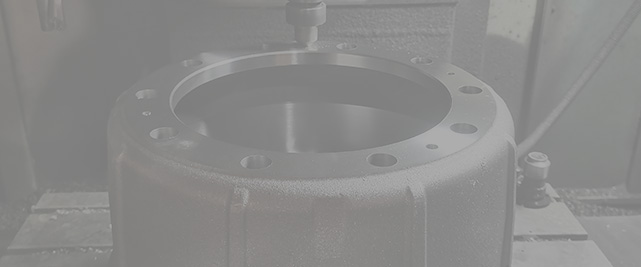Nov . 06, 2024 10:18 Back to list
Exploring Materials Used in Brake Drum Manufacturing and Their Performance Characteristics
Brake Drum Material A Comprehensive Overview
Brake drums play a crucial role in the braking system of various vehicles, particularly those equipped with drum brakes. The effectiveness, reliability, and longevity of these components are heavily influenced by the materials used in their manufacture. In this article, we will discuss the different materials commonly used for brake drums, their properties, advantages, and disadvantages, as well as considerations in selecting the appropriate brake drum material for specific applications.
Common Brake Drum Materials
1. Cast Iron
Cast iron is the most traditional and widely used material for brake drums. It is favored for its excellent strength and wear resistance, as well as its ability to dissipate heat effectively. The primary types of cast iron used for brake drums are gray iron and ductile iron. Gray iron is known for its good castability and machinability, while ductile iron offers improved toughness, making it less prone to cracking under stress.
Advantages - High thermal conductivity allows for efficient heat dissipation. - Durable and resistant to wear. - Cost-effective for mass production.
Disadvantages - Heavier compared to alternative materials. - Prone to rust if not properly treated or coated.
2. Aluminum Alloys
Aluminum alloys are gaining popularity in the manufacture of brake drums due to their lighter weight and resistance to corrosion. These materials provide adequate strength while reducing the overall weight of the vehicle, which contributes to better fuel efficiency.
Advantages - Lightweight construction helps improve vehicle performance and fuel economy. - Corrosion-resistant, reducing maintenance needs. - Potential for improved vehicle handling due to lower unsprung weight.
Disadvantages - Higher cost compared to cast iron. - Not as effective at dissipating heat as cast iron, which may lead to overheating in high-performance situations.
brake drum material

Composite materials, which often combine fibers such as carbon or aramid with a resin matrix, are an innovative option for brake drums. These materials can be engineered for specific performance characteristics, offering significant advantages in terms of weight and heat resistance.
Advantages - Extremely lightweight, further enhancing fuel efficiency. - Excellent heat resistance, which can reduce brake fade during aggressive braking. - Flexibility in design and manufacturing processes, allowing for tailored solutions.
Disadvantages - Generally higher production costs. - May lack the durability of metal options under certain conditions, leading to potential longevity issues.
Considerations for Brake Drum Material Selection
When choosing the appropriate brake drum material for a specific application, several factors need to be taken into account
1. Vehicle Type and Usage The intended use of the vehicle heavily influences material selection. For instance, heavy-duty trucks may benefit from the robustness of cast iron, while performance-oriented vehicles may prioritize weight savings with aluminum or composites.
2. Cost Constraints Budget constraints are always relevant. While high-performance materials like composites offer many advantages, they come at a higher price. Cast iron is often viewed as the most economical choice.
3. Environmental Conditions Vehicles used in harsh environments may require materials with superior corrosion resistance. In such cases, aluminum alloys or coated cast iron may be more suitable.
4. Heat Management The ability to withstand heat and dissipate it effectively is critical. Applications requiring frequent or heavy braking will benefit from materials like cast iron.
5. Weight Considerations For motorsport or light-duty applications, the weight of the brake drum can significantly affect handling and performance, making lighter options more appealing.
Conclusion
The choice of brake drum material is a critical decision that impacts vehicle performance, safety, and maintenance. While traditional cast iron remains the go-to option for many applications, innovations in aluminum alloys and composite materials are paving the way for advancements in brake technology. Ultimately, understanding the specific needs of the vehicle and its intended use will guide manufacturers and consumers in selecting the best brake drum material for their requirements.
-
Scania Brake Drums: OEM Quality for Optimal Safety & Durability
NewsAug.16,2025
-
R.V.I: Advanced Remote Visual Inspection for Precision
NewsAug.15,2025
-
Discover HYUNDA: Innovative Vehicles, Equipment & Solutions
NewsAug.14,2025
-
R.V.I: Unlock Advanced Insights & Real-time Performance
NewsAug.13,2025
-
Kamaz Brake Drum: Durable & Reliable for Heavy Duty Trucks
NewsAug.12,2025
-
Heavy Duty Iveco Brake Drum - Premium Quality & Safety
NewsAug.11,2025
